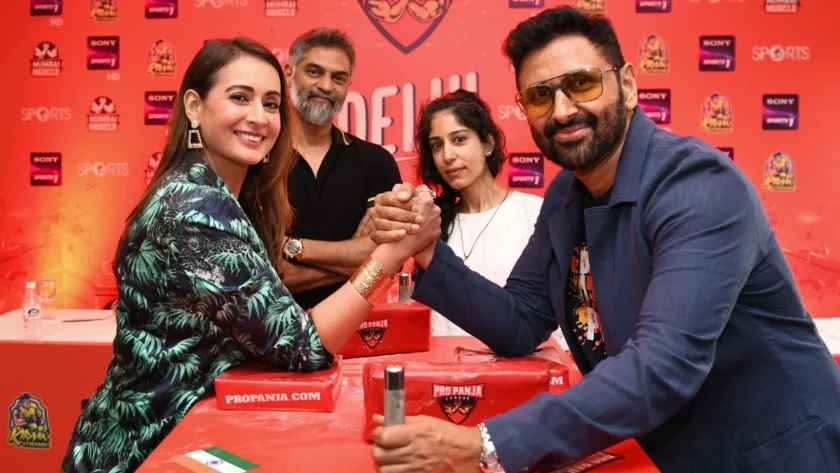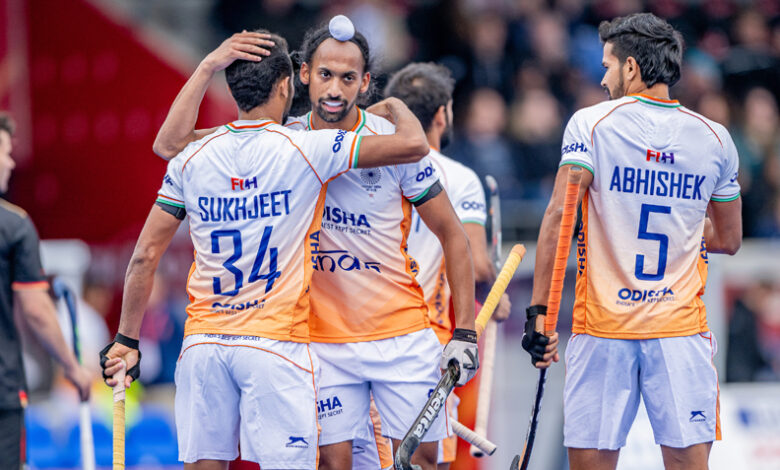 Lucknow: At 6:00 AM on a scorching May morning, the first ball of the Sheesh Mahal tournament would cut through the silence of Lucknow’s summer. The mercury was already climbing past 35°C, the wickets were dry and cracked, and the only prize at stake was a few thousand rupees and bragging rights. Yet the KD Singh Babu Stadium would come alive—schoolboys with notebooks for autographs, old men chewing paan in the stands, and young cricketers desperate to prove they belonged.
Lucknow: At 6:00 AM on a scorching May morning, the first ball of the Sheesh Mahal tournament would cut through the silence of Lucknow’s summer. The mercury was already climbing past 35°C, the wickets were dry and cracked, and the only prize at stake was a few thousand rupees and bragging rights. Yet the KD Singh Babu Stadium would come alive—schoolboys with notebooks for autographs, old men chewing paan in the stands, and young cricketers desperate to prove they belonged.
Fast forward to today: floodlights blaze over the 50,000-capacity Ekana Stadium. Rishabh Pant thumps a six into a sea of blue-and-green jerseys. Bhojpuri beats rattle the rafters. The Lucknow Super Giants (LSG), worth nearly a billion dollars, are chasing glory in the Indian Premier League.
This is Lucknow’s cricketing journey—an odyssey from dusty mornings and “pure cricket” to the high-octane carnival of the IPL. It is a story stitched together with sweat, nostalgia, ambition, and the unyielding spirit of a city that refuses to be left out of cricket’s grand narrative.

The Beginnings: A City and Its Game
Lucknow’s tryst with cricket began quietly, during colonial times. Amid the Nawabi courts and British cantonments, bat and ball found their way into schoolyards and college greens. La Martiniere College and Colvin Taluqdars’ College nurtured some of the city’s earliest talents, while the KD Singh Babu Stadium became a home for domestic cricket.
But cricket in Lucknow was never just about institutions. It was about the streets, the clubs, and the tournaments that brought the city alive. By the mid-20th century, one tournament stood taller than all others.
Sheesh Mahal: Cricket’s Crown Jewel
-
M. Askari Hasan, a man with cricket flowing in his veins, decided Lucknow needed its own grand stage. What he built was not merely a tournament—it was a legend.
The Sheesh Mahal tournament, named after the famed “Mirror Palace” of Kaiserbagh, was unlike anything India had seen. Matches were played in punishing summer heat, starting at dawn to beat the sun. There were no fat cheques, no TV cameras, no glitz. Just raw cricket.
The format evolved with the times—two-day matches gave way to 50 overs, then to the brisk tempo of T20s. Yet the essence never changed. This was a crucible where careers were forged.
Legends graced its turf. Mansoor Ali Khan Pataudi, Kapil Dev, Bishan Singh Bedi, and Sunil Gavaskar all left their footprints in Lucknow’s dust. In 1999, a stocky young wicketkeeper from Ranchi, M. S. Dhoni, cracked a half-century here that hinted at the destiny awaiting him. Ashok Mankad and Eknath Solkar got their Test call-ups after dazzling in 1969. Navjot Sidhu found redemption in its middle overs.
There was no IPL-style frenzy, yet Sheesh Mahal had something rarer: soul. Bishan Singh Bedi remembered it as “a symbol of pure cricket.” Crowds came not for fireworks but for craft. Bowlers sweated under the unforgiving sun. Batsmen battled not only opponents but the elements.
But time is a ruthless umpire. Sponsorships dried up. The lure of the IPL drained away attention. And when Askari Hasan passed away in 2007, the heartbeat of Sheesh Mahal faltered. By 2010, the jewel had dimmed.

Uttar Pradesh: A Sleeping Giant Awakes
Beyond Lucknow, Uttar Pradesh was a sleeping giant of Indian cricket. A state bursting with population, talent, and energy, yet lacking the polish of Mumbai or Delhi. Hockey and wrestling dominated its heartlands for decades.
Still, pockets of cricket thrived. Kanpur’s Green Park echoed with Ranji matches and international fixtures. Meerut, with its cricket bat factories, produced not just equipment but players who dreamt big. Local clubs kept the fire alive.
The Uttar Pradesh Cricket Association (UPCA), founded in the 1930s, slowly built pathways. It was here that Mohammad Kaif grew into the architect of India’s famous NatWest Trophy win in 2002. Suresh Raina emerged as one of India’s most stylish left-handers. RP Singh, Piyush Chawla, and Praveen Kumar all rose from the state’s soil.
The watershed moment came in 2005-06, when Uttar Pradesh lifted its maiden Ranji Trophy, led by Kaif and powered by Raina. The underdogs had finally roared.
But the real revolution was still to come.
2008: The IPL Changes Everything
The Indian Premier League was more than a cricket tournament—it was a cultural earthquake. Suddenly, cricket wasn’t just about five-day Tests or quiet Ranji Trophy fixtures. It was three hours of fireworks, music, cheerleaders, and billion-dollar stakes.
For small-town cricketers, it was liberation. No longer did one need to break into India’s national team to earn a living or fame. Perform well in the IPL, and you were a star.

For Uttar Pradesh, the IPL was a golden door. Local boys could now share dressing rooms with global icons. Families who once saw cricket as a risky gamble began dreaming of it as a career path. The ecosystem of academies, sponsors, and fans expanded rapidly.
And for Lucknow—a city that had lost the Sheesh Mahal—the IPL offered redemption.

Enter the Lucknow Super Giants
-
Lucknow finally had its own IPL franchise. Bought by the RP-Sanjiv Goenka Group for ₹7,090 crore, the Lucknow Super Giants were born with one of the most expensive price tags in world sport.
Their fortress was the gleaming Ekana Stadium, renamed after Bharat Ratna Atal Bihari Vajpayee. With a seating capacity of 50,000, it dwarfed the old KD Singh Babu Stadium.
Led by KL Rahul, LSG stormed into the playoffs in their debut season. They did it again in 2023, cementing themselves as contenders. But cricket’s fortunes are fickle—2024 and 2025 saw the team stumble, finishing seventh twice in a row.
Change was inevitable. Ahead of 2025, LSG shocked the cricketing world by signing Rishabh Pant as captain for a record ₹27 crore. Alongside him came international heavyweights like David Miller and Aiden Markram, and homegrown prodigies like Ravi Bishnoi and Mayank Yadav. Coached by Justin Langer, mentored by Zaheer Khan, LSG reset their ambitions.
Pant’s swashbuckling style, Pooran’s fearless sixes, Yadav’s express pace—suddenly, the Nawabi city was roaring again. Bhojpuri beats in the stands, firecrackers in the sky, and the dream of an IPL title burned bright.
Tradition vs. Modernity
Compare Sheesh Mahal to the IPL, and you see two different worlds. One was about dawn matches, cracked pitches, and hand-written scorecards. The other is about drone cameras, sponsorship deals, and billion-dollar media rights.
Yet, the soul is the same. Sheesh Mahal once gave India Dhoni; today, LSG is grooming the likes of Badoni and Yadav. The cheers at Ekana may be louder, but the passion is no less than what once echoed at KD Singh Babu Stadium.
Lucknow, in many ways, embodies cricket’s evolution in India itself—a journey from romance to realism, from passion to professionalism, from community to commerce.
The Cricket Thrill is Still On
For all its glory, Lucknow’s cricket faces its toughest tests yet. The Super Giants still chase their first IPL crown. Grassroots cricket needs more investment, better coaching, and stronger pathways to keep producing stars.
But opportunity has never been brighter. The IPL has made Lucknow a global cricketing city. Its matches boost tourism, fuel business, and showcase Uttar Pradesh’s culture to the world. Every six hit at Ekana echoes far beyond its walls.
The City That Never Stops Dreaming
Lucknow’s cricket story is a tale of reinvention. From the Sheesh Mahal’s raw mornings to the Ekana Stadium’s glittering nights, the city has walked cricket’s every path. It has seen the purity of passion and the power of commerce. It has launched legends and nurtured underdogs.
Above all, it has shown that cricket in Lucknow is more than a sport—it is a heartbeat. A beat that once pulsed through the Sheesh Mahal grounds, and now reverberates under the floodlights of the IPL.
As the Lucknow Super Giants march on, chasing their elusive title, they carry not just the dreams of a city but the legacy of every dusty dawn, every cheering crowd, every Nawabi flourish that has ever touched a cricket bat in this city.
Lucknow’s odyssey is far from over. If history is any guide, its best innings are yet to come.





